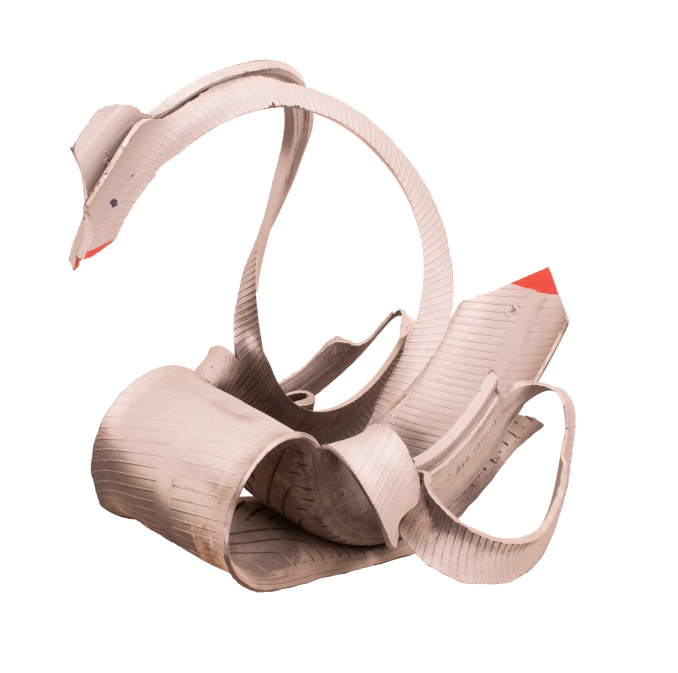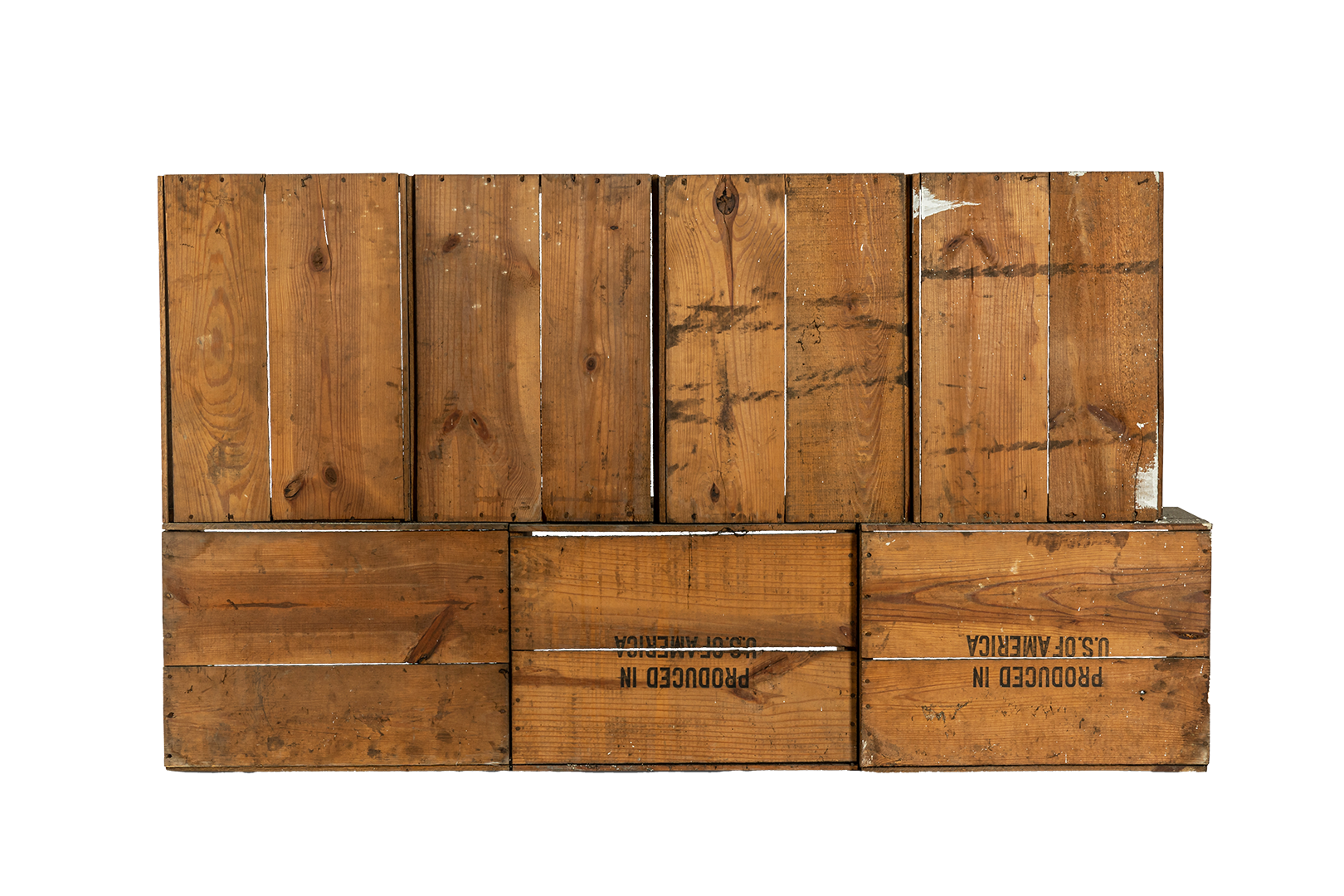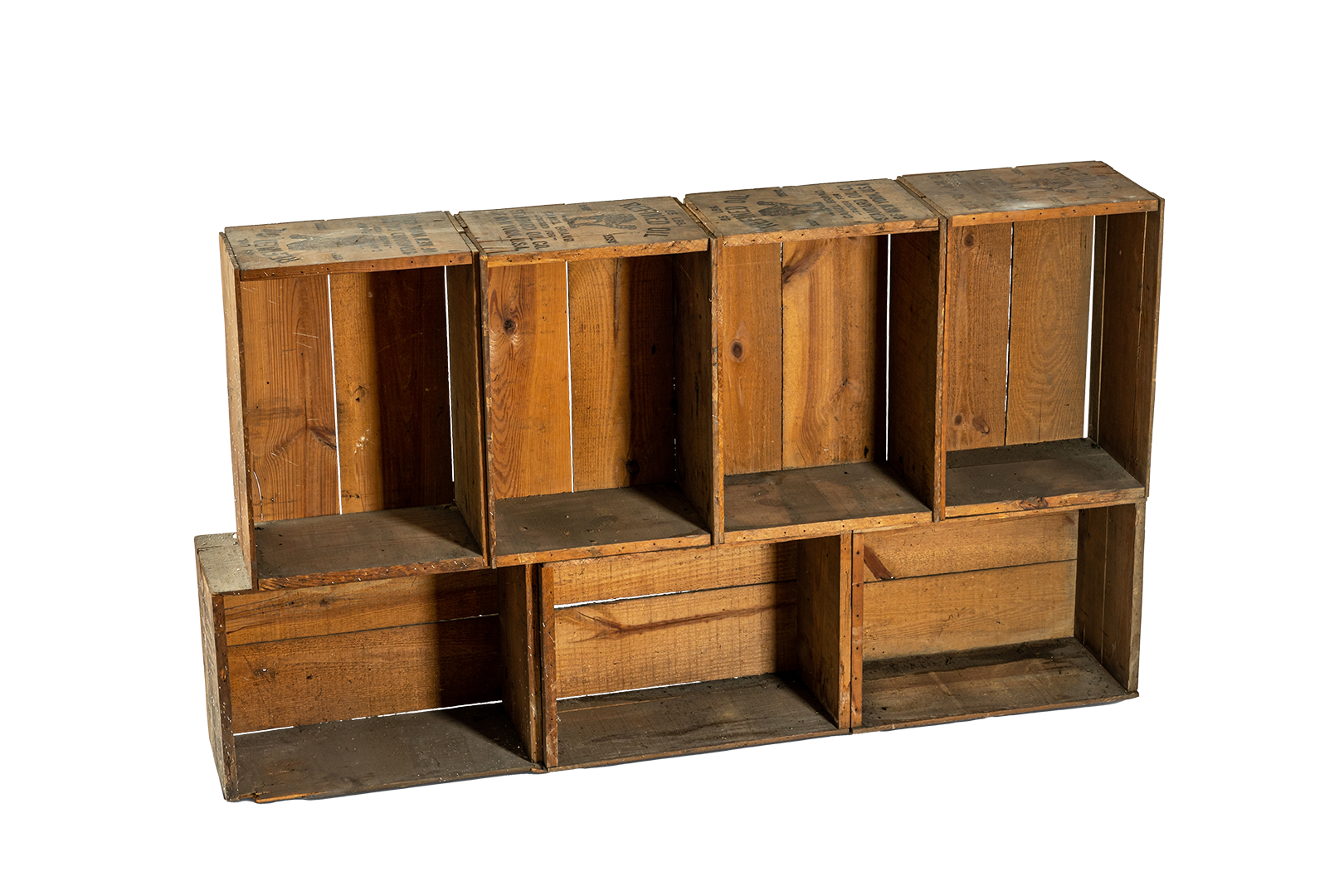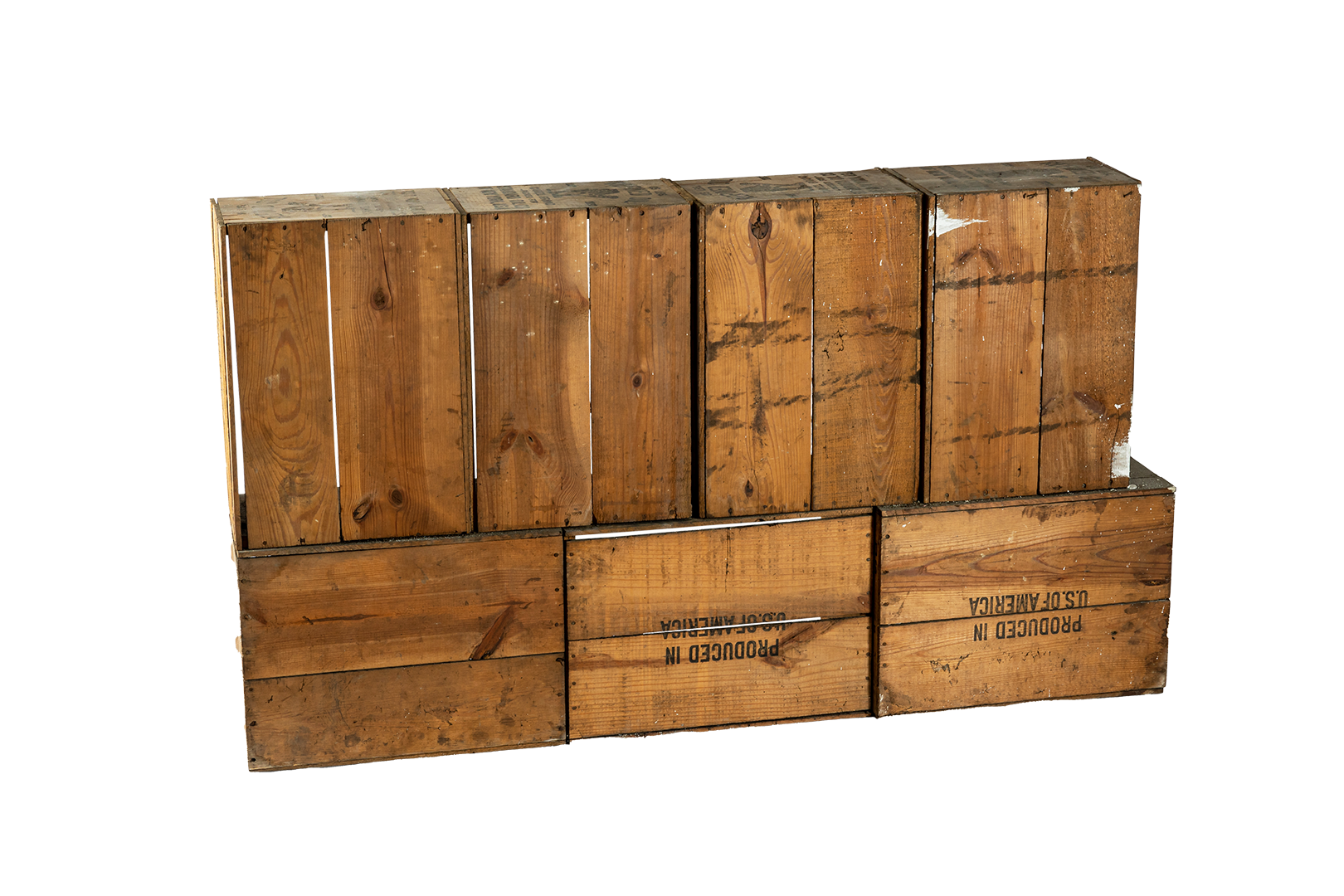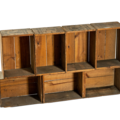Artist/Maker Josip Pelikan
Date Production/Creation
1960s or 1970s
Entry in the museum collection
2021
Place of origin
New York, USA, North America
Current location
Museum of Recent History Celje, Celje, Slovenia
Material
Wood, print, metal / homemade
Dimension
890x1500x280 mm
Inventory Number 745:CEL;JP-0032166
Keyword Home Reuse Self-made/DIY
Copyright Celje Museum of Recent History
Status In storage
Image Credit Matic Javornik
A testament to a man who treasured the objects around him.
What is this object about, who are the people behind it?
The shelf is made from seven large packing crates originally used to transport refined oil. The writing in English on the crates testifies to their original purpose and origin. The shelf originally stood in the house of the renowned Celje photographer Josip Pelikan, whose legacy now forms part of the Museum of Recent History Celje. Probably built by one of the photographer’s assistants, the shelf was meant for storing in the attic items that were not frequently used.
What places is this object related to, how European/transnational is it?
The shelf was in the attic of the house of Celje photographer Josip Pelikan. The packing crates used to make the shelf probably came to Slovenia – then part of Yugoslavia – via the port of Trieste in Italy.
Why and how did this object arrive in the museum’s collection?
The shelf made from packing crates was originally in the former house of the Celje photographer Josip Pelikan, which now forms part of the Museum of Recent History Celje. The furniture and other items that were in the house are part of the Josip Pelikan museum collection, which comprises photographs and various objects created or owned by the photographer. This is an extremely important heritage that bears witness to life in Celje in the 20th century.
What is the relation of this object to waste?
Inventive and reflective, Josip Pelikan found a specific purpose in everything. Instead of throwing the crates away, he reused them to make something he needed in his house. And the crates were just the right size to stand in the attic. The large quantity of materials, furniture and other items that have been preserved 40 years after Pelikan’s death are a testament to his attitude to objects. That attitude was characteristic of a generation that had experienced world wars and the deprivations they brought.

